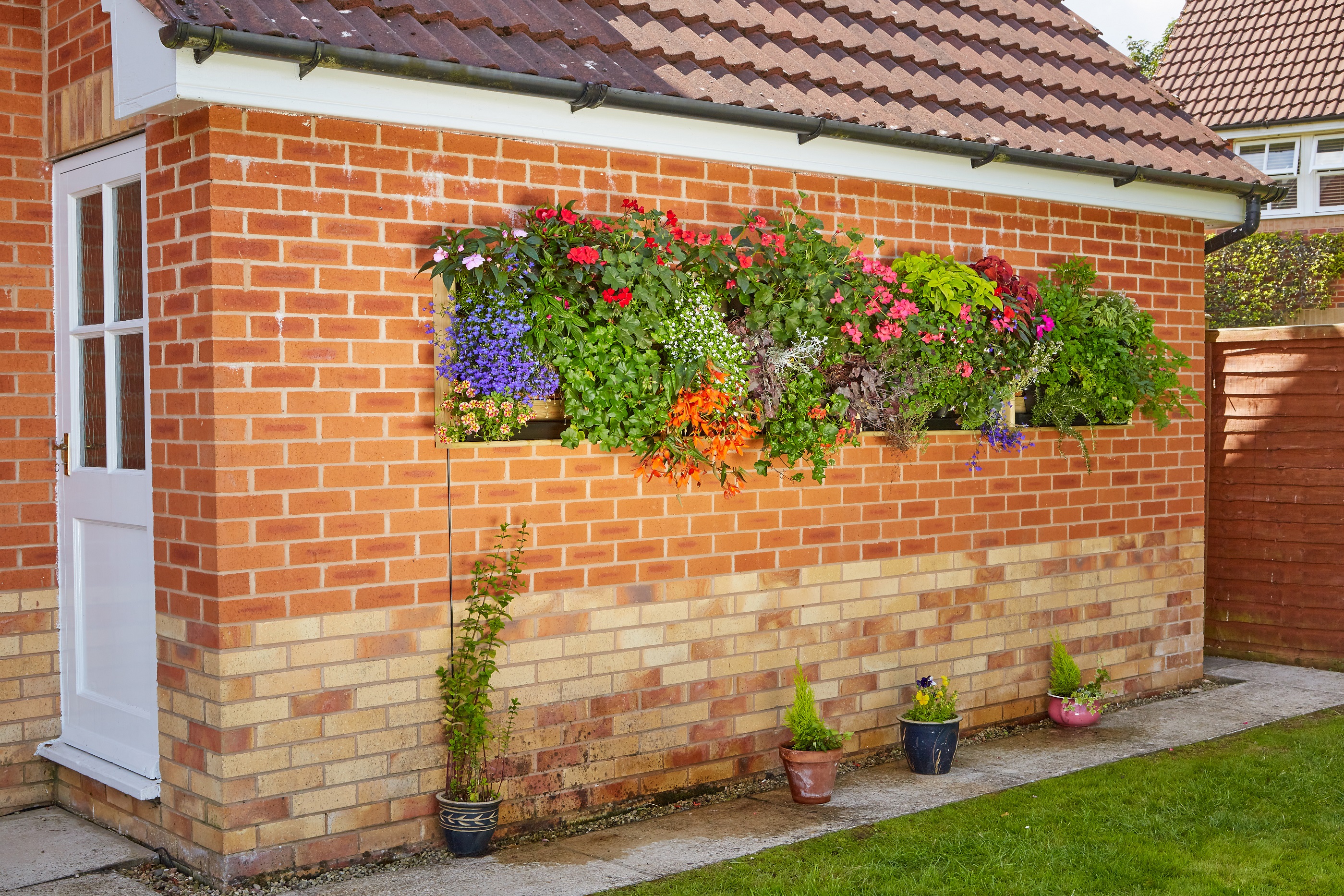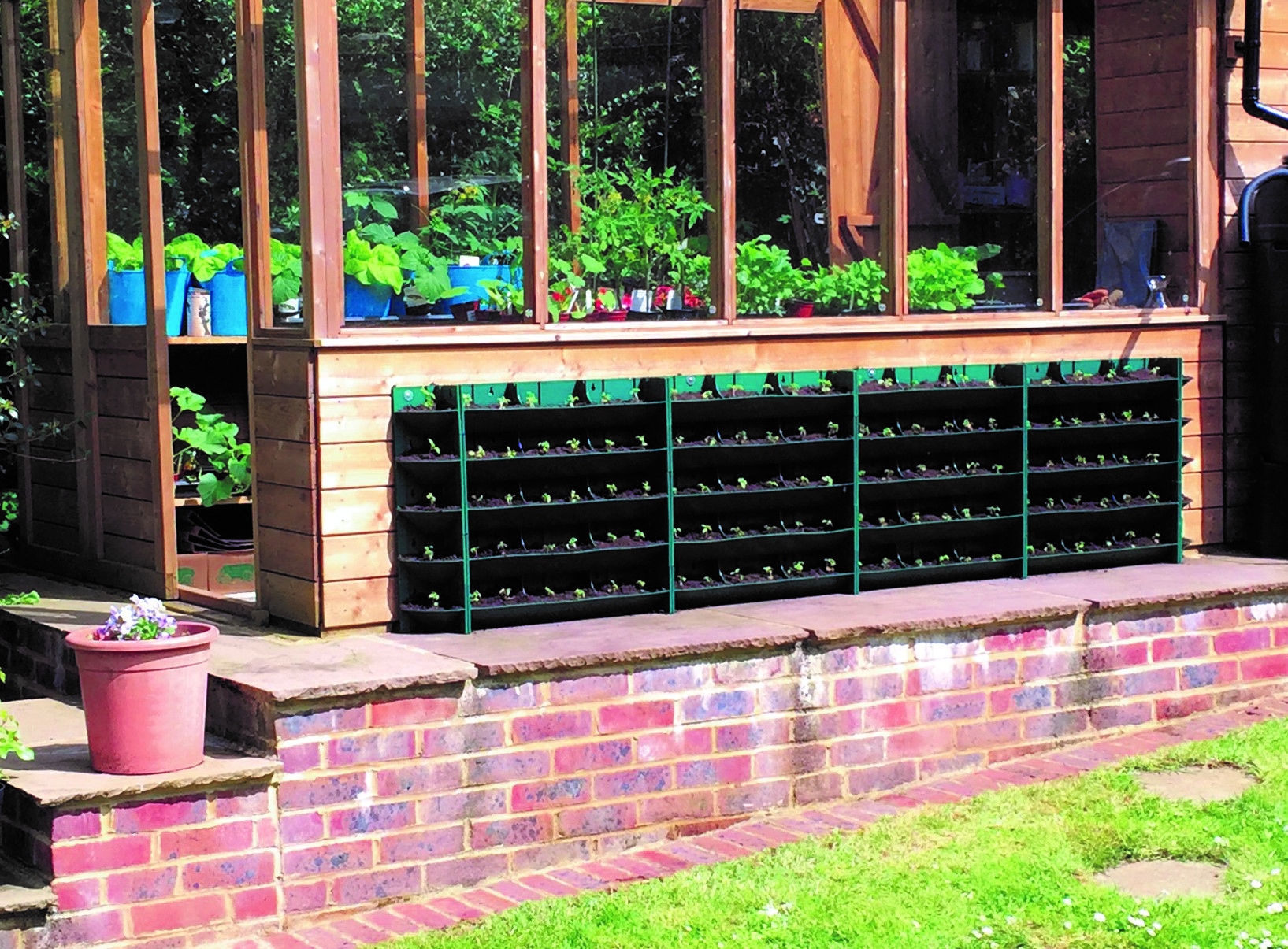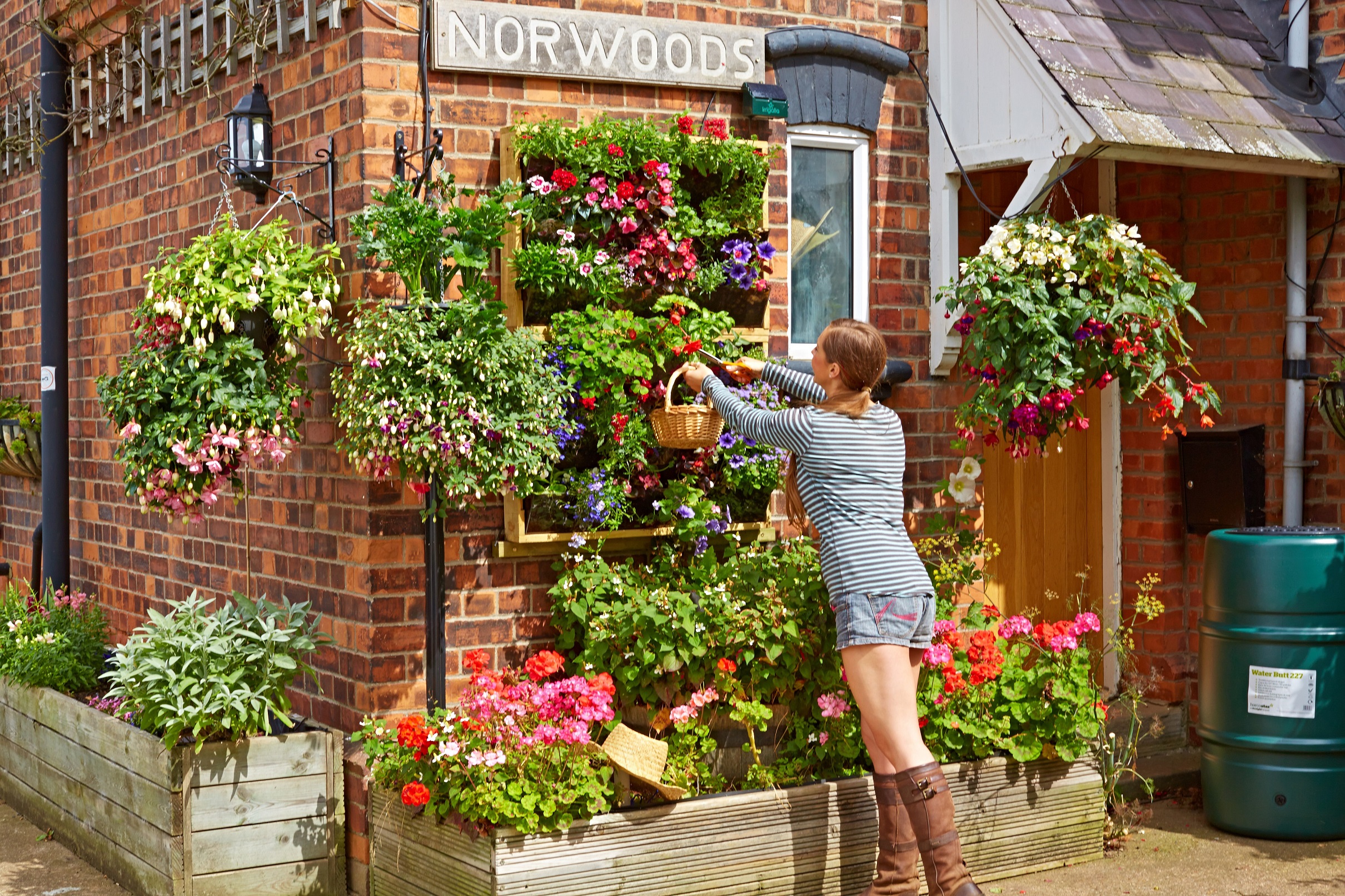How to copy the vertical planting trend
They are a regular feature of horticultural shows nationwide, their green walls of foliage creating colour and form on otherwise uninteresting backdrops.
While some designers make vertical gardens look like works of art, featuring intricate mosaics of different foliage, everyday gardeners with limited space can also create great visual additions without too much fuss.
You can buy anything from simple black canvas pockets with a number of holes in them for the plants, which attach to the wall, to salad and herb vertical planters, living art frames displaying a combination of plants, and troughs which will house lush green plants over a wide area of wall, equipped with water reservoirs which will provide a steady trickle to the plants as they need it. Or you can even make your own.

Vertical planting home-made style
“Systems tend to be [made] of small modules that can be handled by the average person and built up into something larger by being attached to a vertical surface or to each other,” says Paul Smith, business manager at wholesaler Brundle Gardener (www.brundlegardener.co.uk).
What plants can you use?

Colour up bland walls
“The planting holes often aren’t as deep as a veg trug and are generally for shallow-rooted plants. They’re going to fill a gap or provide you with vertical gardening in a small space where you are stuck horizontally, but you’re going to have to consider what plants can grow in a planter that size,” says Paul.

Use plug plants
“Putting plug plants in is the best – you’re not going to put in a plant that’s been planted in a five-inch pot because you won’t get the necessary depth in the planter.
“But you can get bedding plants or herbs and salads in their early stages. You’ll need to harden off plug plants before planting them out, but they should be fine in a sheltered spot.”
Think about size

Consider height and size
Consider though, that the larger the vertical garden the more complex it becomes in terms of maintenance and installation. If you are going to install a garden above head height you need to think how you are going to water, weed and feed the plants.
Many planters come in fixed dimensions and cannot be cut to size. If you start cutting planters, you need to re-seal the end or else water will just run out.
In many vertical gardens, water is recycled through the planting system, says Erick Mackay at Irrigatia (www.irrigatia.com), which produces an automatic solar-powered watering system.

Shade lovers on bigger walls
Place shade-loving varieties at the base of the area and sun-lovers, such as geraniums, thyme and sage, at the top.
Add some spring bulbs for a happy surprise when it is still cold, and try some wild strawberries for the children to pick all summer.

Add strawberries
Ideally place the planter in half sun and half shade. Compost can be standard multi-purpose compost. After four to six weeks, start feeding the plants.
Try succulents

Succulents work well in frames
Succulents can also work in vertical planters mixed with shells or other ornaments and some manufacturers sell frames in different shapes and sizes.
Be waterwise

Raised drainage holes help
There are more elaborate planters on the market and automatic irrigation systems which allow you to branch out with planting.
Doesn’t the water just run out on to your decking or patio?
“It’s not much different from a terracotta pot with a hole in the bottom,” says Paul. You can water vertical gardens with a watering can or use a drip irrigation system. Planters should have raised drainage holes in the base, forcing the planter to hold some water in its base to be drawn up into the soil and the roots.
“If your plants don’t benefit from wet roots, you can drill multiple holes to allow the water to cascade down on to the next plant until it gets to the bottom.”
The Press Association
Latest posts by The Press Association (see all)
- 8 things your feet can tell you about your health - January 8, 2025
- 9 ways to look after your emotional health better in 2025 - January 7, 2025
- EastEnders fans to vote on storyline for the first time in 40th anniversary week - January 7, 2025
- Aldi beats rival Lidl as cheapest supermarket of 2024 - January 6, 2025
- All the benefits of lifting weights beyond bigger muscles - January 6, 2025





















